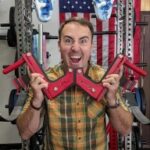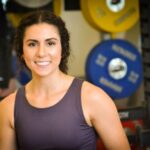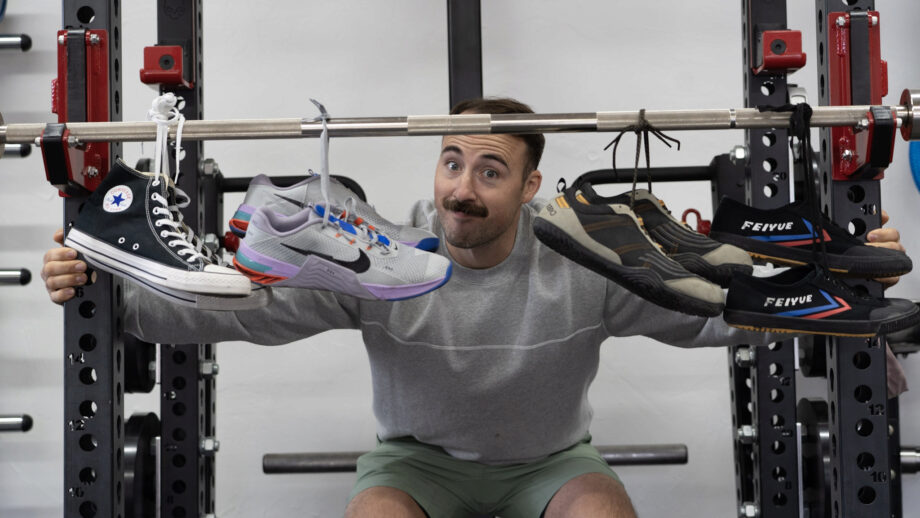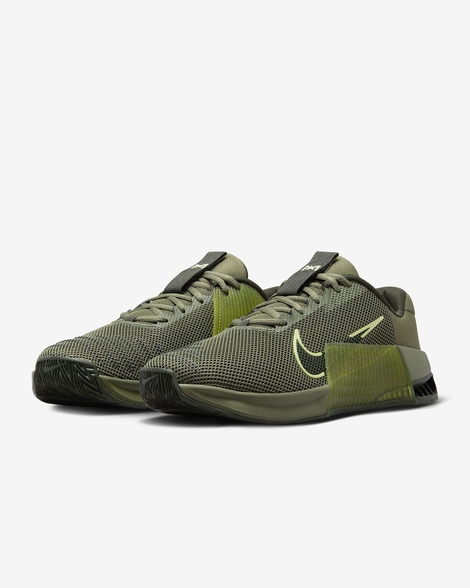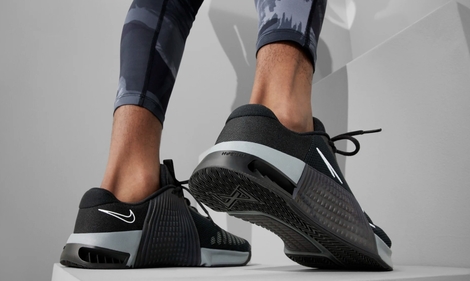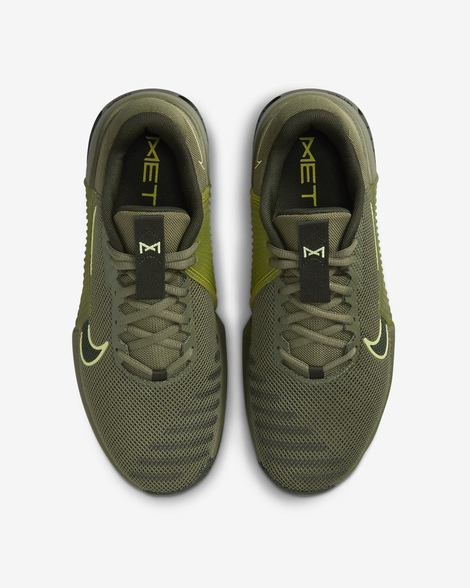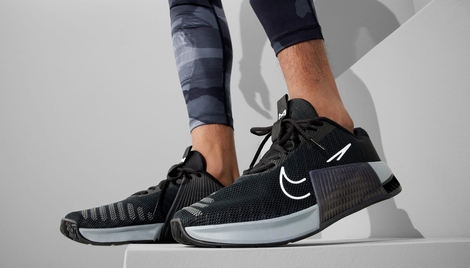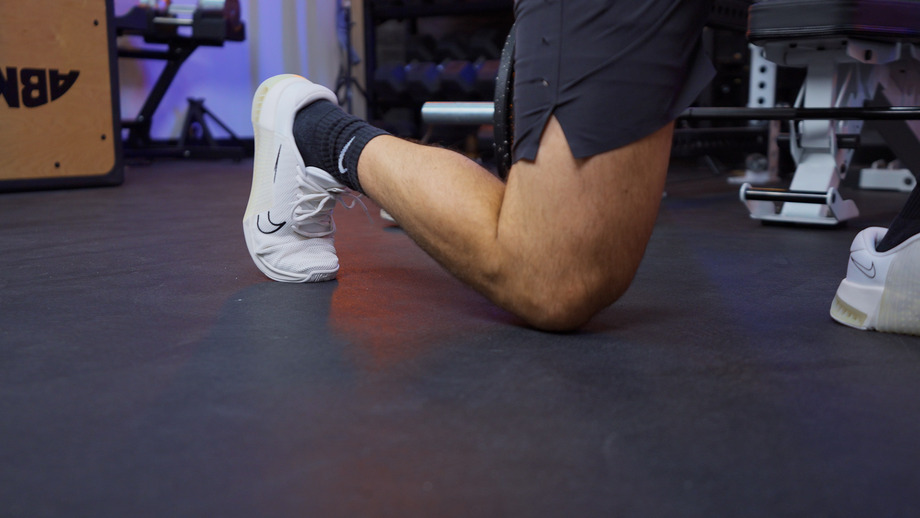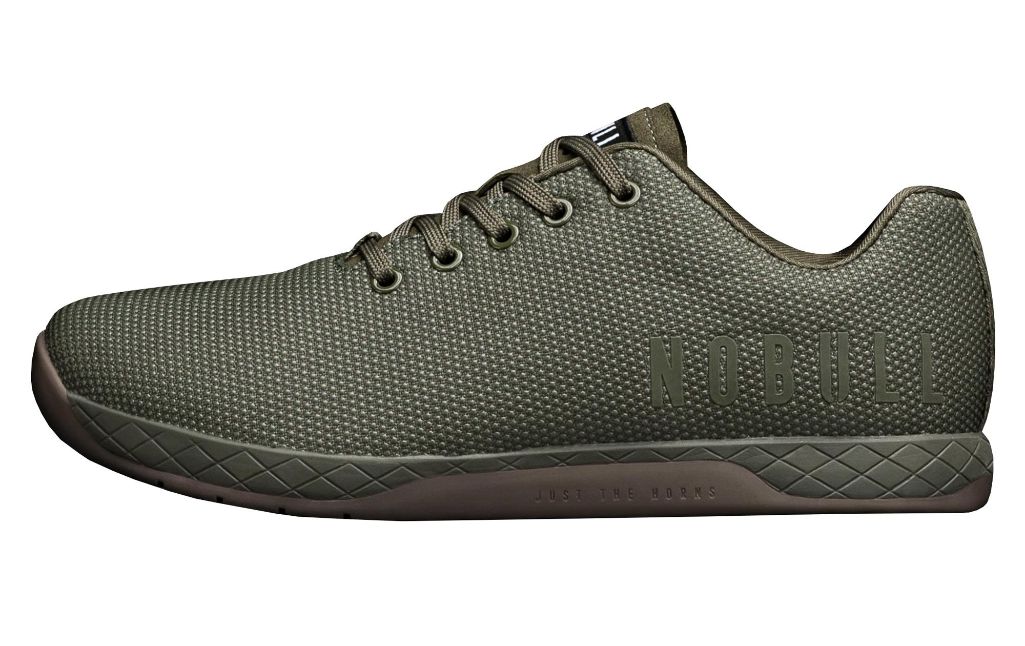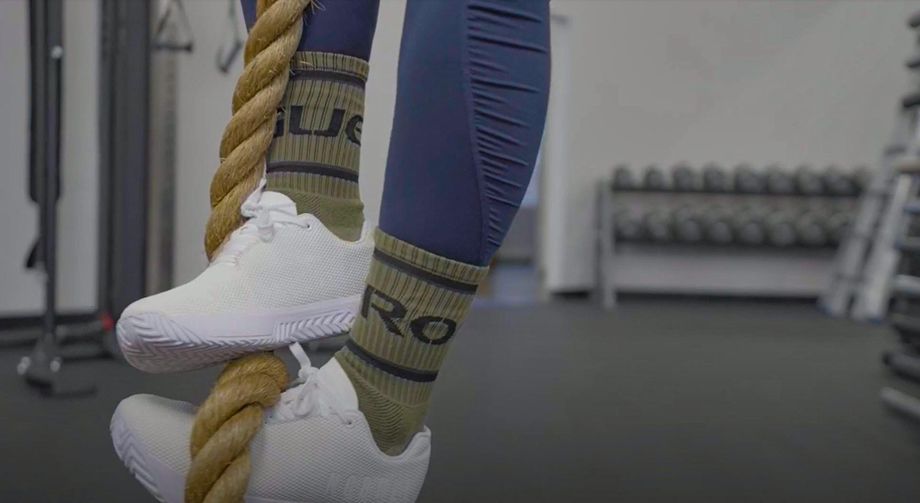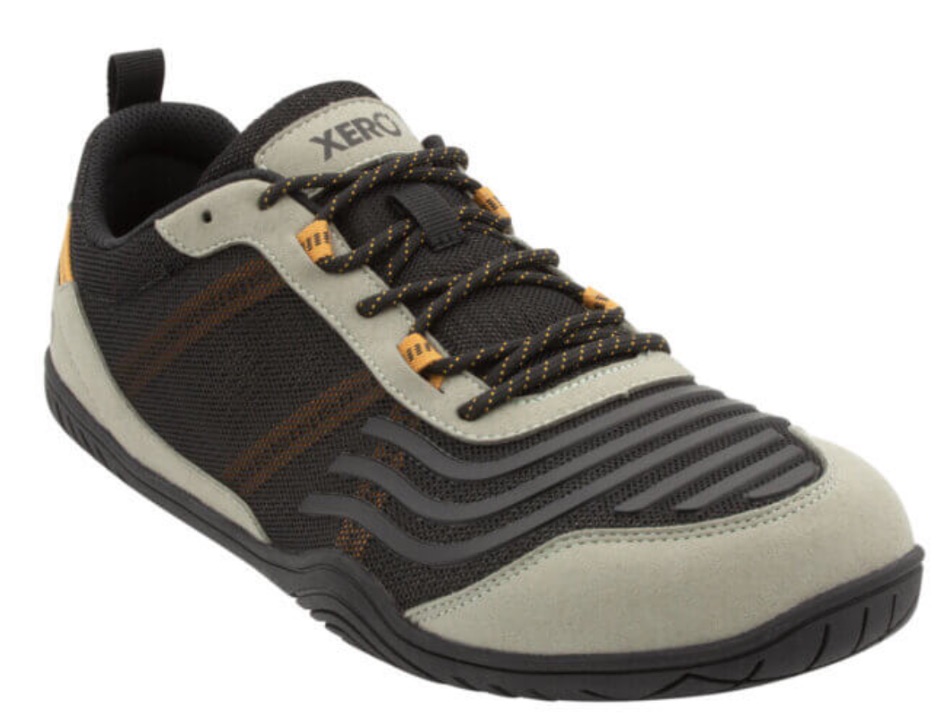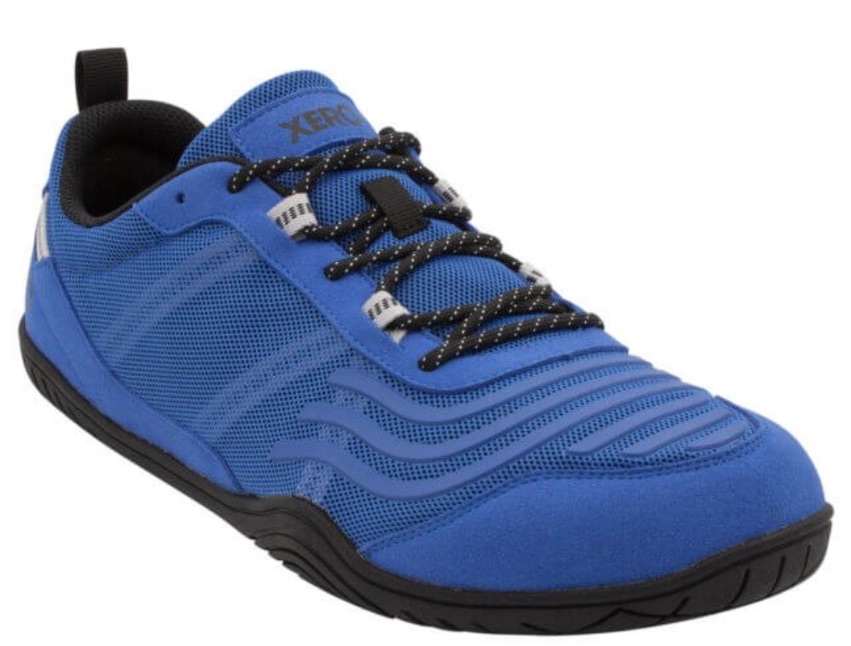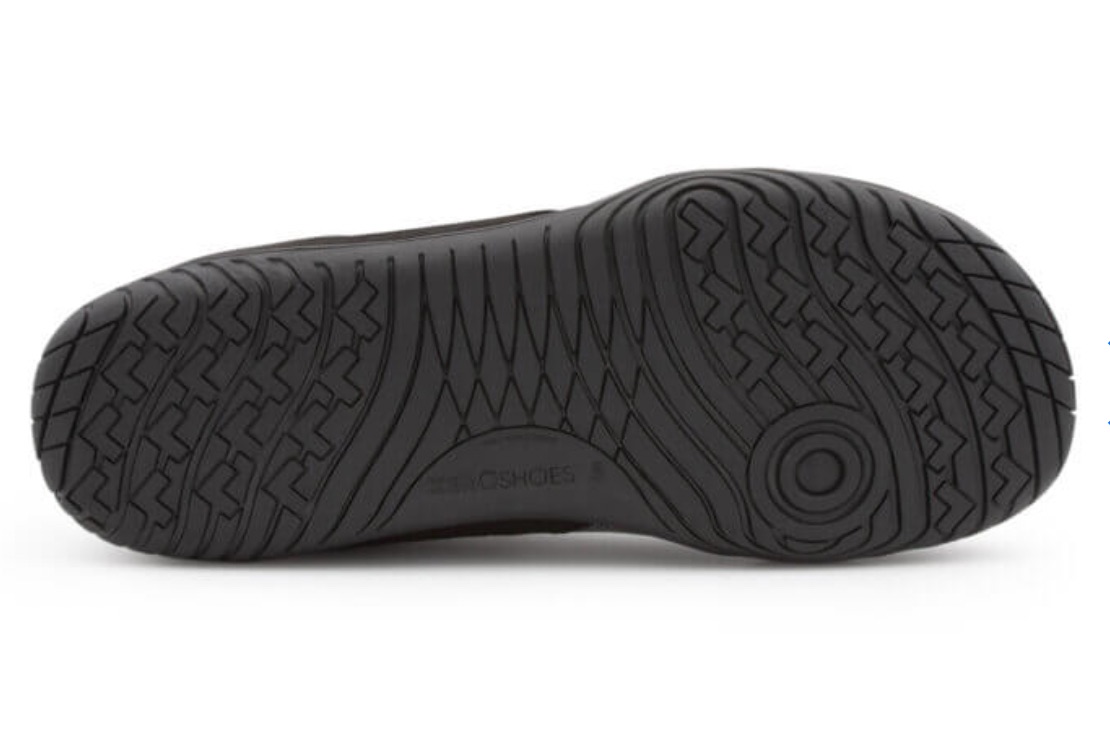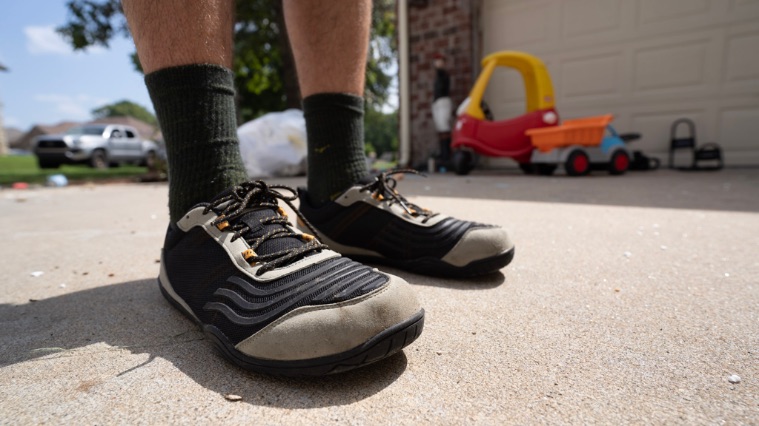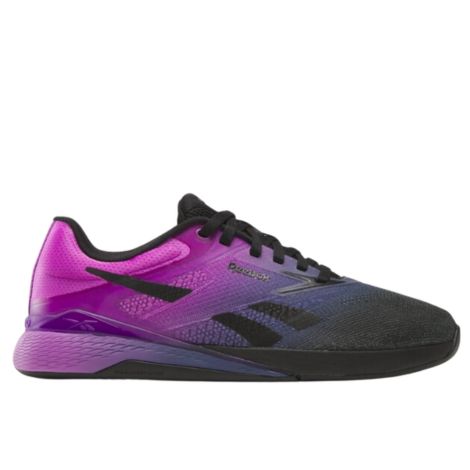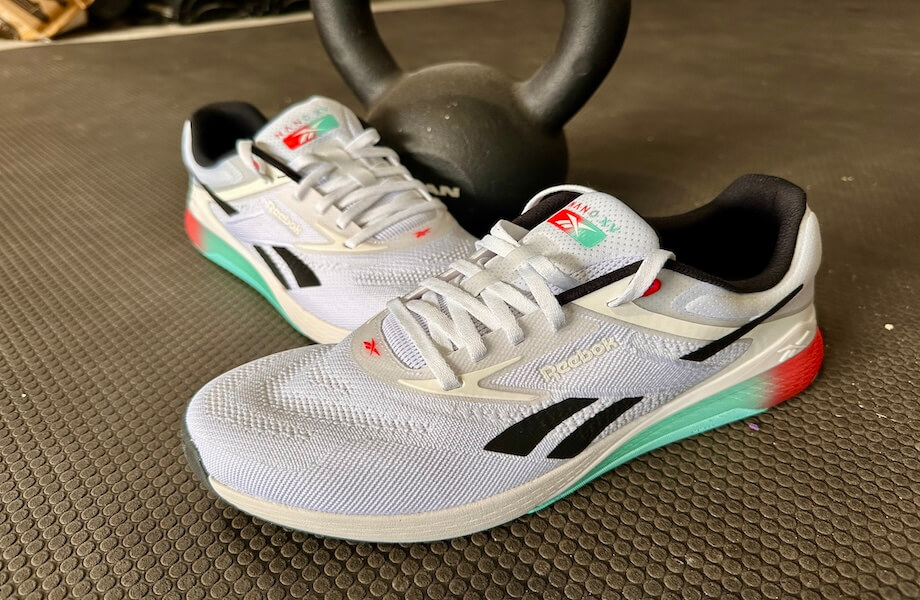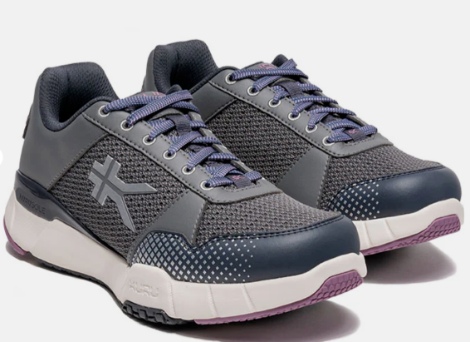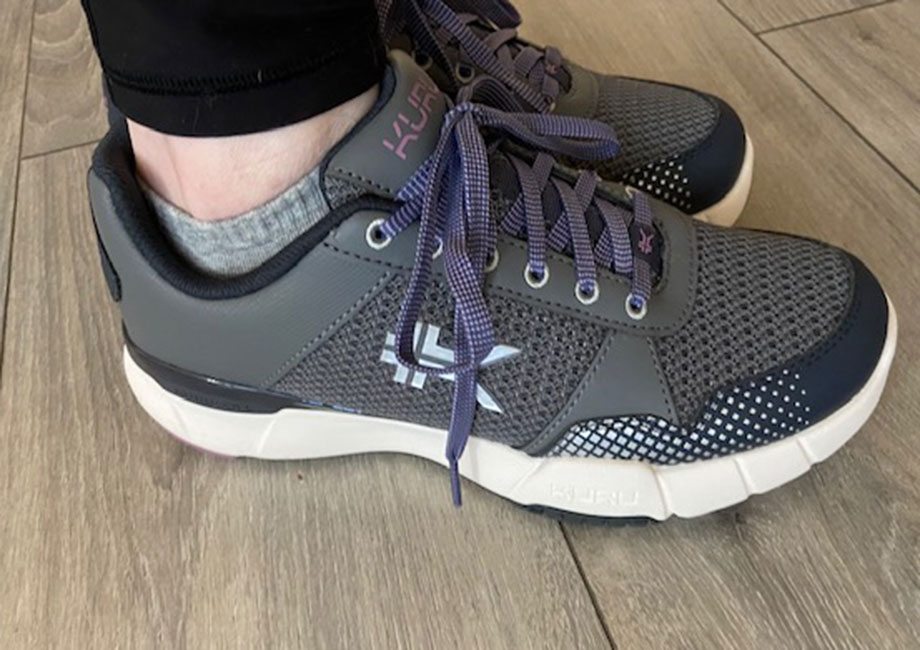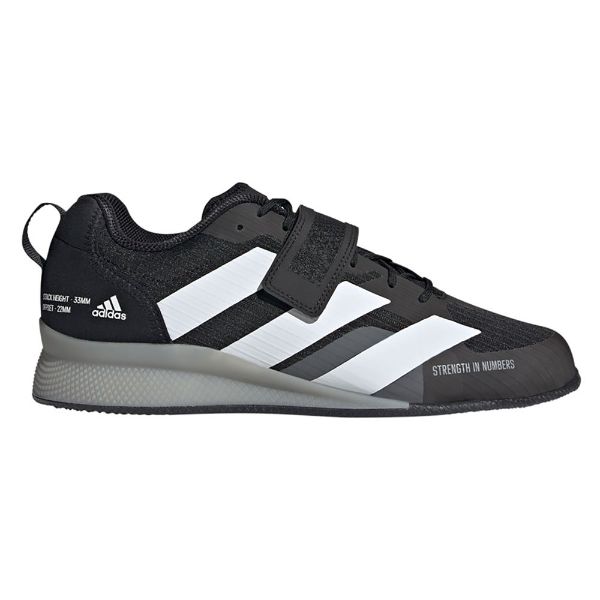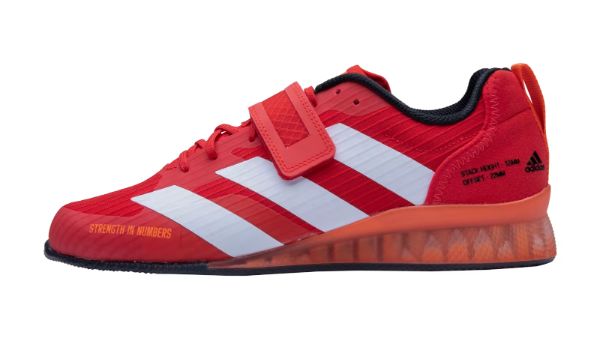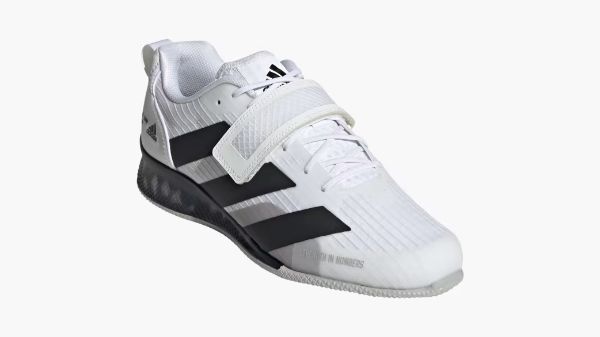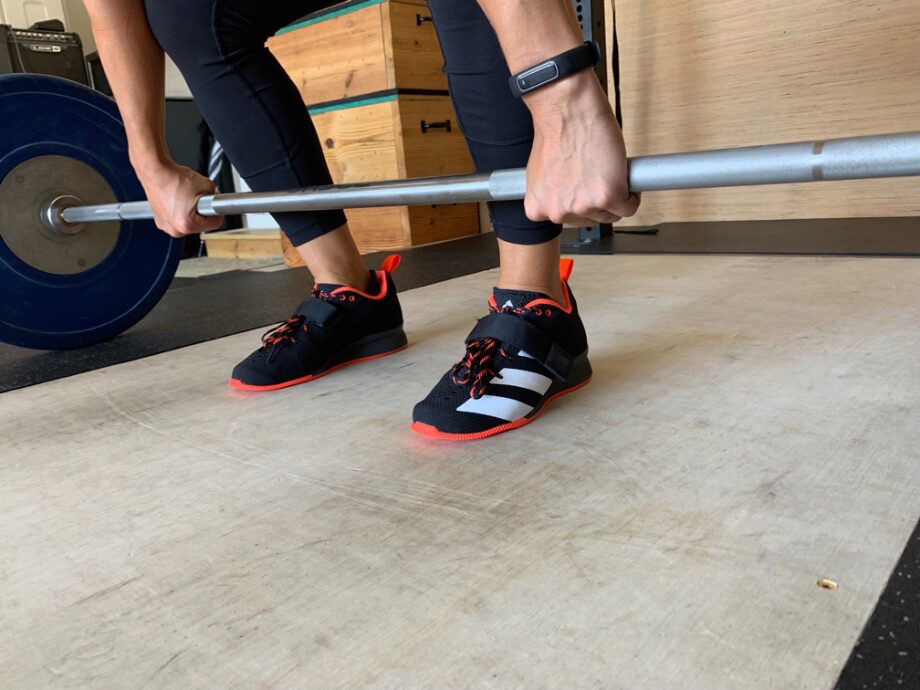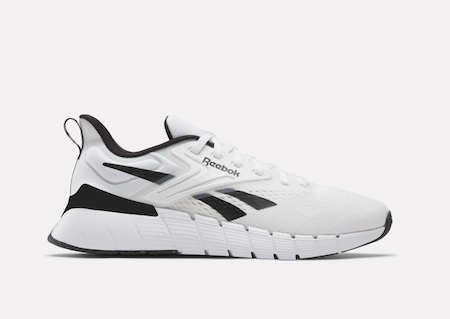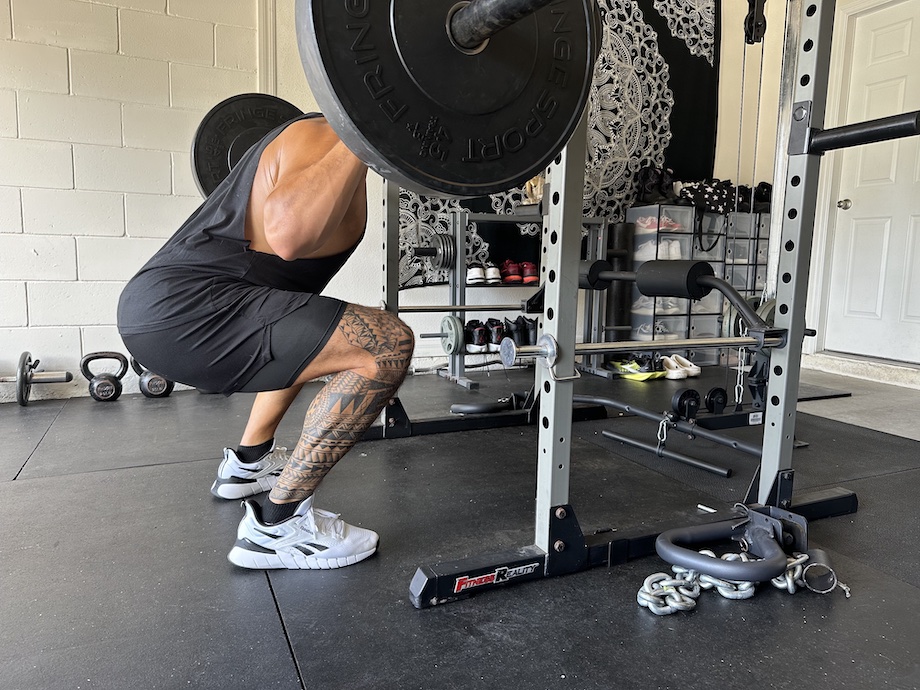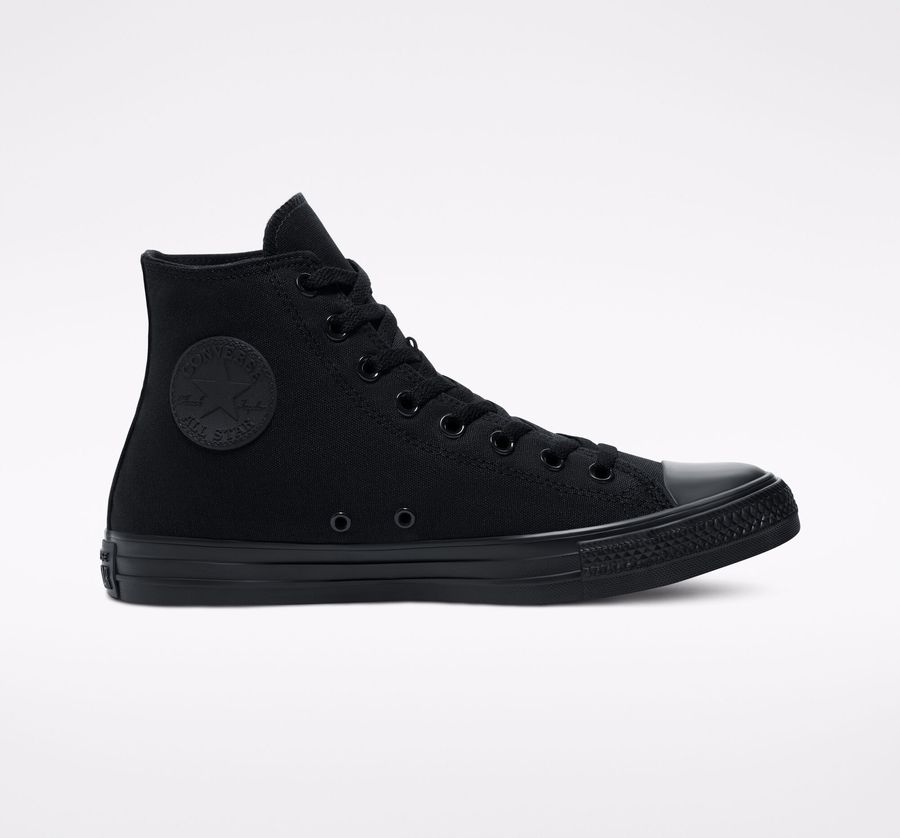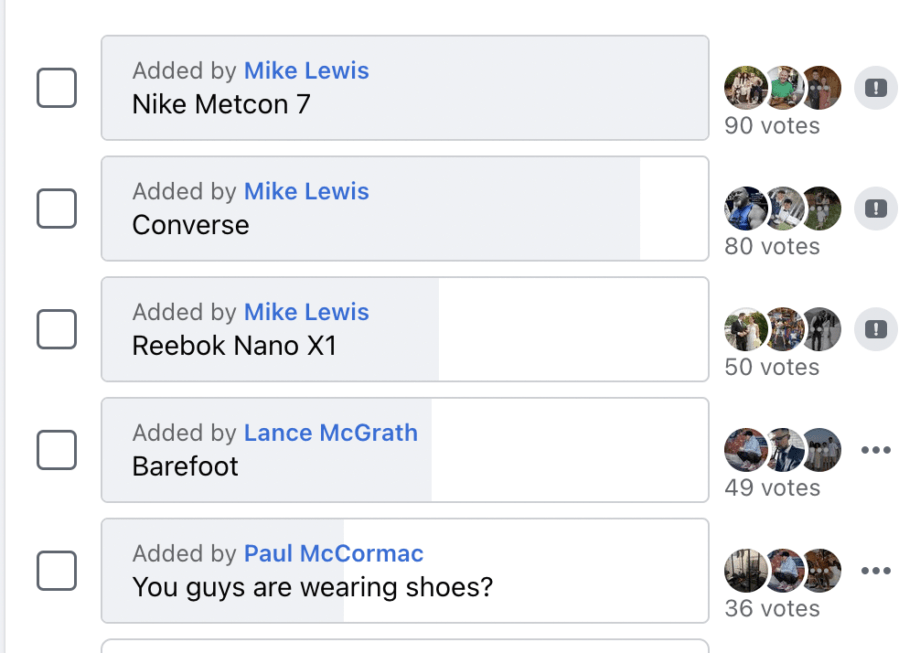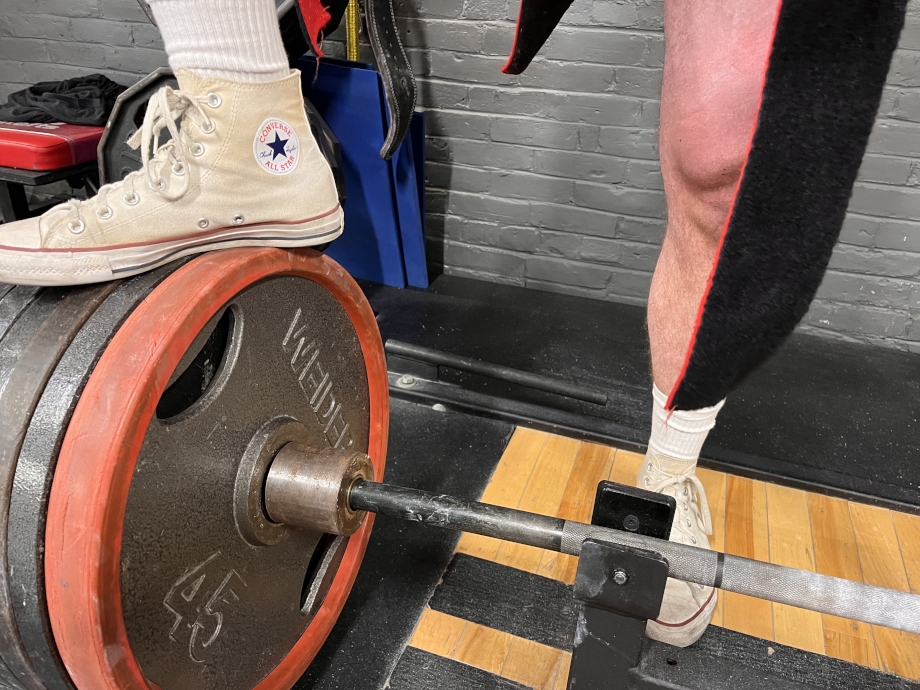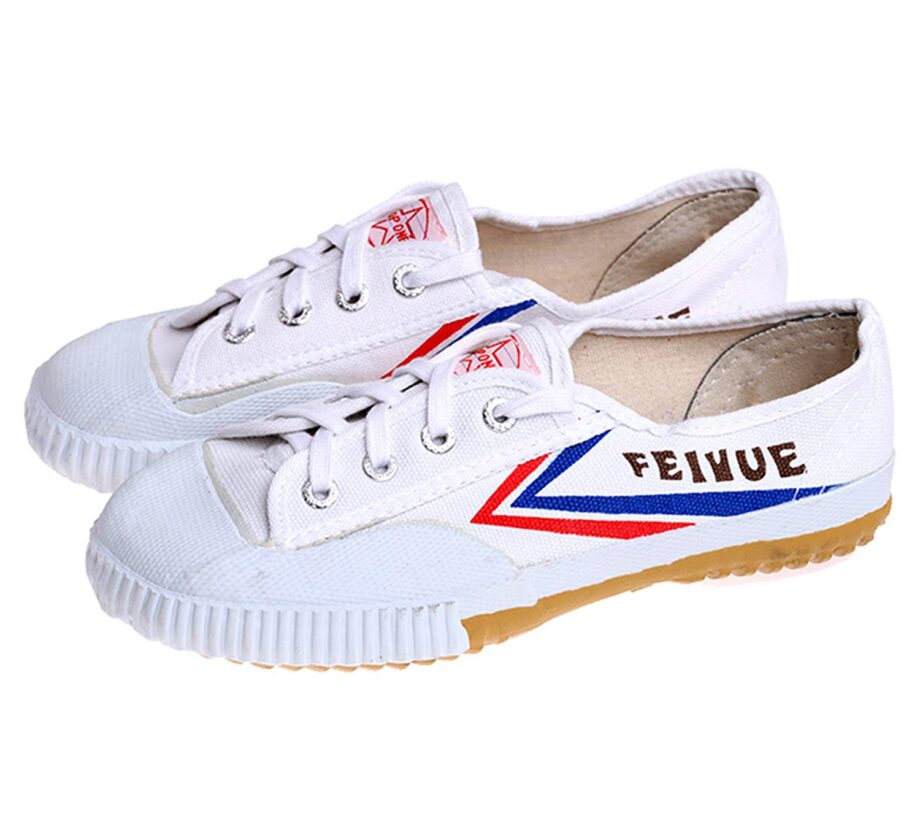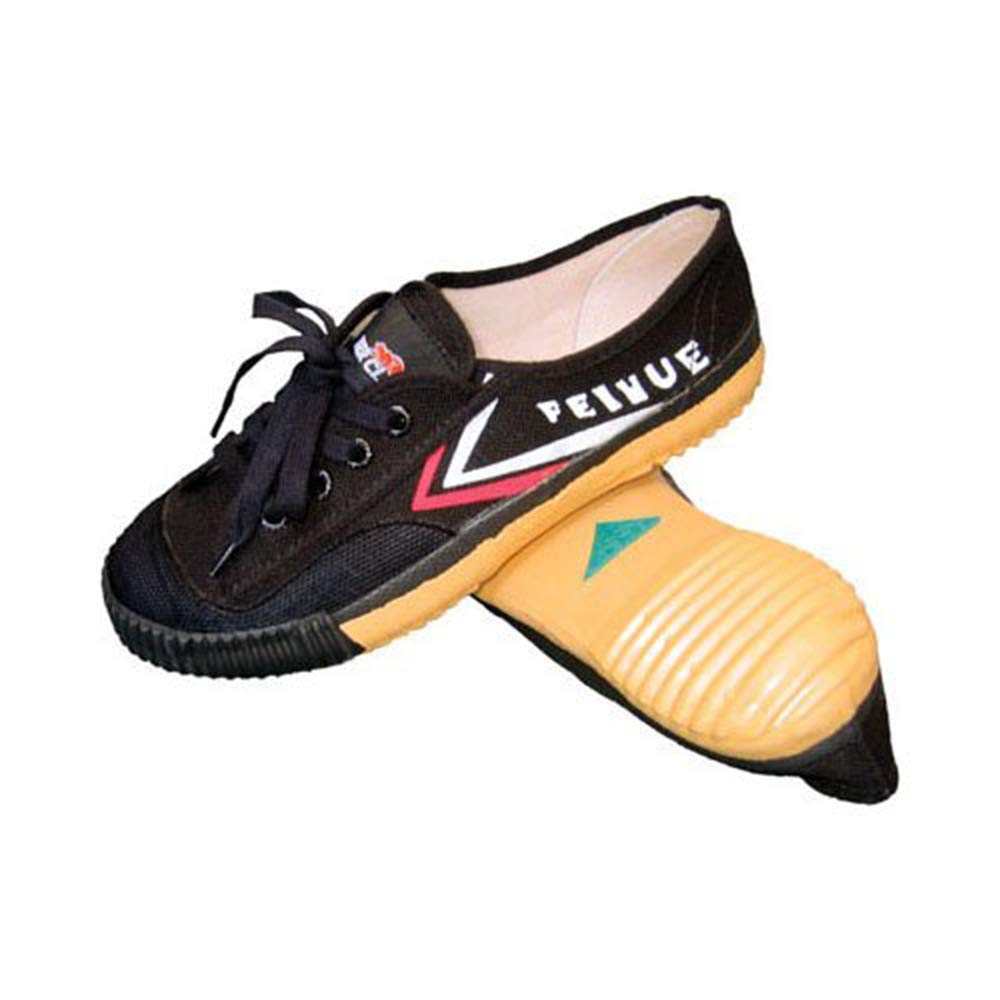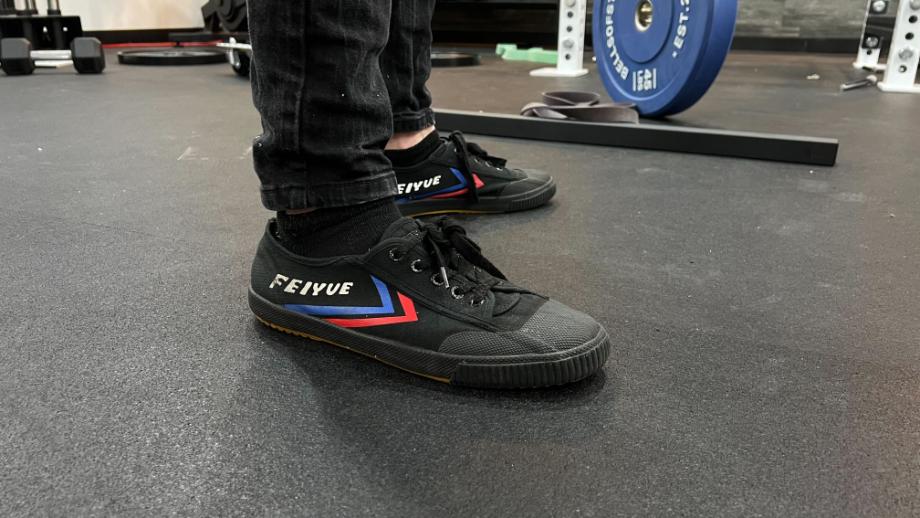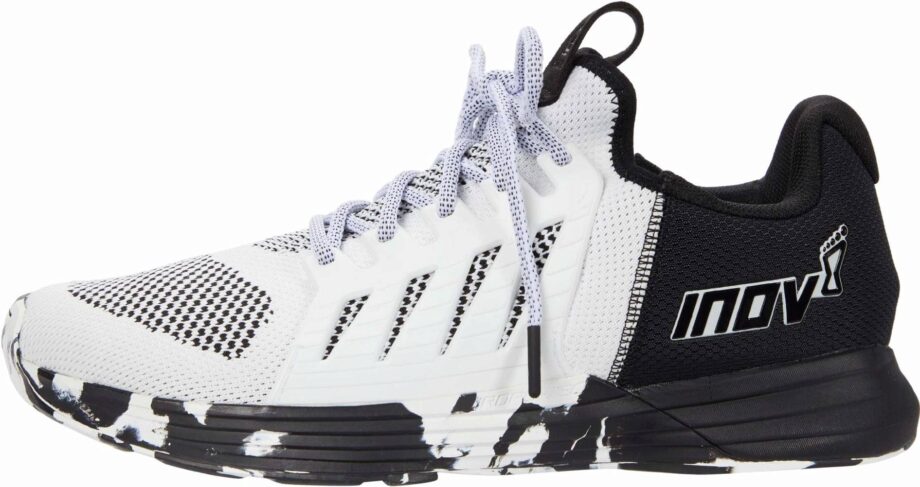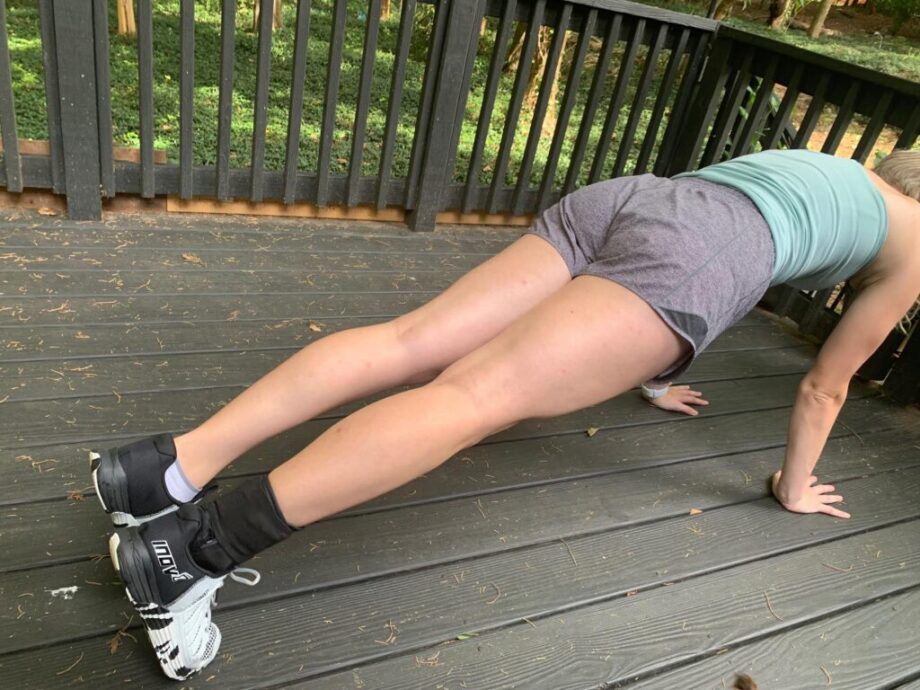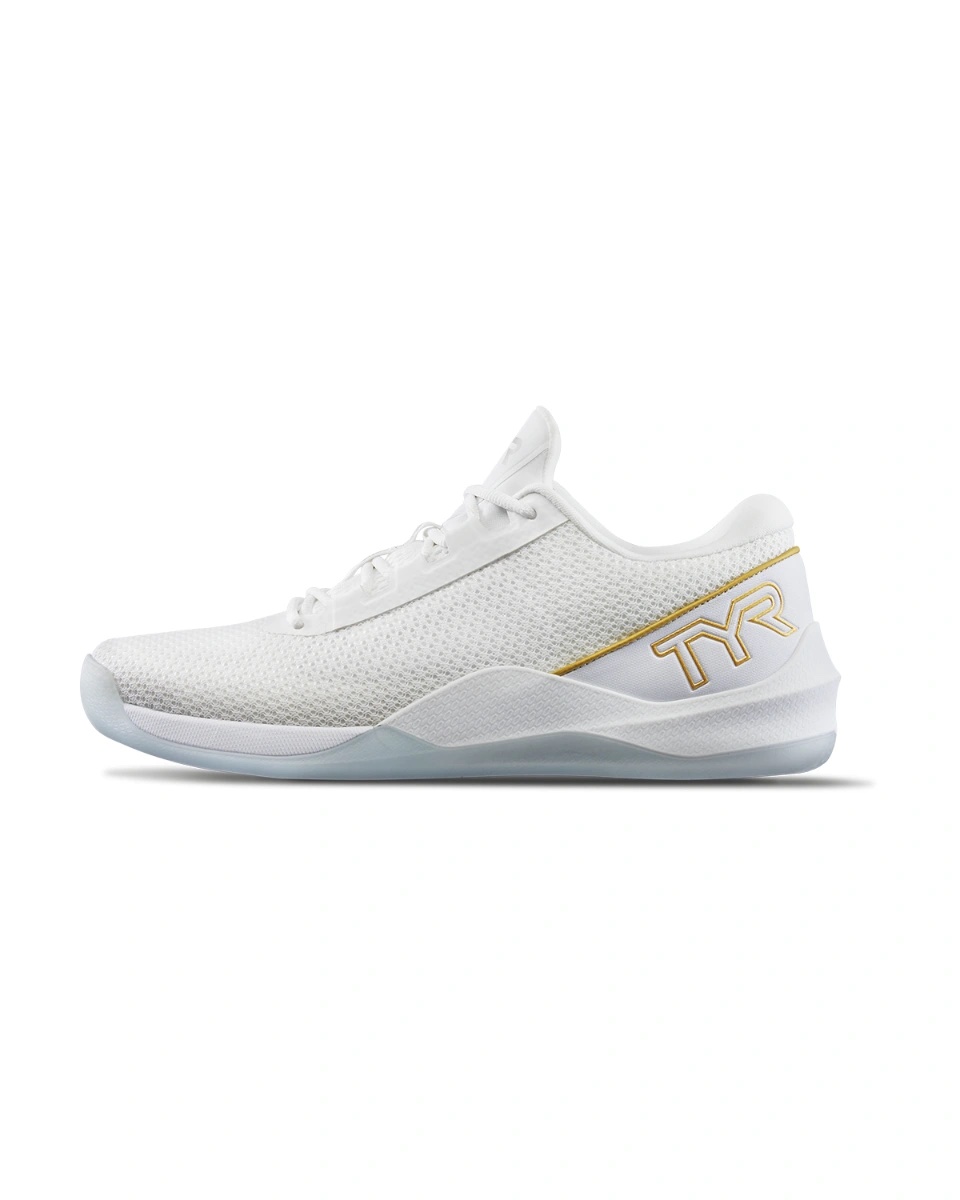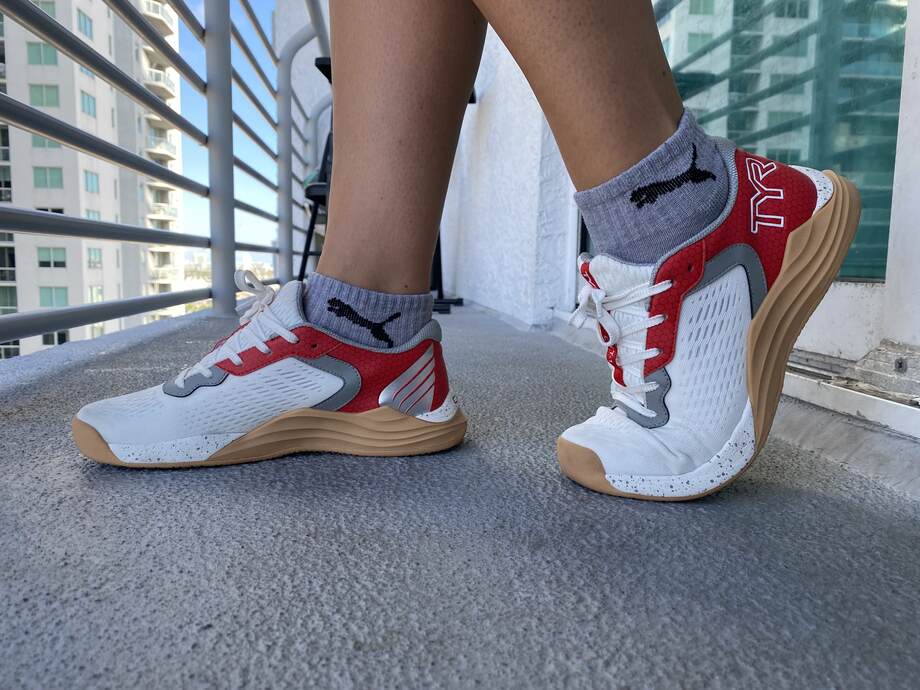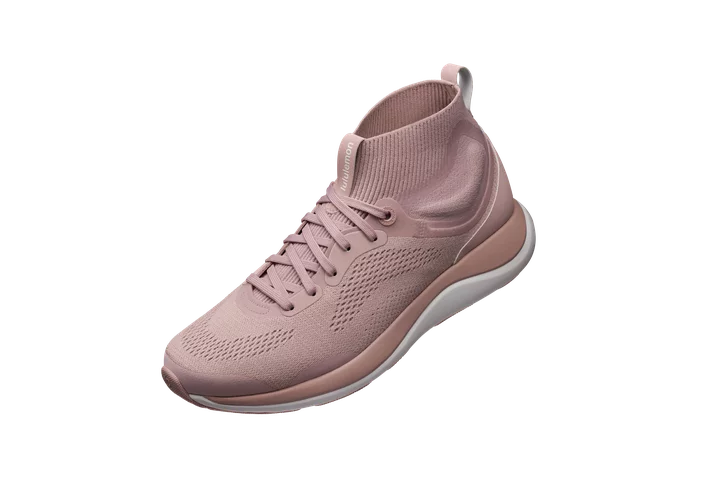Cross-training shoes are your all-purpose kicks that can support you during weightlifting, CrossFit, cardio, and everyday life. They help you save on money, because you’re not buying several pairs of specialty shoes, and time, because you’re not changing them when switching from lifting to running.
With that in mind, we’re aware that not every cross-trainer is a shoo-in (sorry, had to) for everyone’s gym bag. Some people may need more arch support than others, and your desired level of cushioning will be determined by how you train. It all comes down to what feels best on your feet, and only you can be the judge of that.
That’s why, like a great cross-trainer, our list of the best cross-training shoes has a little something for everyone. Myself and the Garage Gym Reviews team has laced up shoes from Nike, Adidas, Reebok, New Balance, Asics, Under Armour…I could go on for hours but I’d probably start to bore you. The point is, we’ve tried out countless pairs, going back to long before I started posting my honest thoughts about them online. I’ve made it a point to actually try on every one before I tell you whether or not I think they’re worth your time and money.
That research has led me to compile the lists of the best CrossFit shoes, best weightlifting shoes, and even a training shoes guide to figure out what kind of shoes you should wear based on your style of training. We also look at important factors like:
- Cushioning: Does it have the level of cushioning for your preferred training style? Minimal cushioning is better for strength training and maximum cushioning is for those who prefer endurance training.
- Versatility: Can it be used for multiple exercises? Can you run and lift in them with ease?
- Breathability: Is your foot cool?
- Durability: Can it be used daily and still remain in good condition for multiple years?
I have a team of fitness enthusiasts and experts who aren’t afraid to debate me on the qualifications of certain shoes, so you’re not just getting my perspective here. We went back and forth and did plenty of “sole” searching before finalizing this list.
My Picks for the Best Cross-Training Shoes
- Best Cross-Training Shoe Overall: Nike Metcon 9
- Best Cross-Training Shoes for Flat Feet: NOBULL Outwork
- Best Barefoot Cross-Training Shoe: Xero 360 Shoes
- Best Cross-Training Shoe for Men: Reebok Nano X5
- Best Cross-Training Shoe for Wide Feet: KURU QUANTUM 2.0
- Best Cross-Training Shoes for Squats: Adidas Adipower III
- Best Budget Cross-Training Shoes: Reebok Nano Gym Shoes
- Best Cross-Training Shoes for Deadlifts: Converse Chuck Taylor All-Star
- Best Super-Budget Cross-Training Shoes: Feiyue FE LO 1920
- Best Cross-Training Shoe for Arch Support: INOV8 F-Lite G 300
- Best Cross-Training Shoes for Women: TYR CXT-2 Trainers
- Best Cross-Training Shoe for Running: lululemon Chargefeel Workout Shoe
Best Cross-Training Shoes Overall: Nike Metcon 9
Good for: People who need a shoe for lifting and cardio
The Nike Metcon 9 training shoes were released in August 2023 and build upon the Nike Metcon 8s with an enhanced rope guar wrap-around, plus a larger and more rigid crash pad. They feature a tightly woven and durable, but breathable, upper. The patterned, grooved outsole provides great traction during most weather conditions.
What our tester says:
“The Hyperlift plate and rigid heel is a huge positive for weightlifting, but not so much for running. If you’re planning on doing a lot of running, you’re probably going to hate this shoe—just being honest.”
Best Cross-Training Shoes for Flat Feet: NOBULL Outwork
Good for: People with flat feet looking for a comfortable shoe
NOBULL Outwork shoes are a versatile and durable cross-training shoe with minimal support. Available in some unique colorways, these shoes have a low effective heel height and are ideal for people looking for a minimalist shoe.
What our tester says:
“When I initially put these on, I didn’t like the feel. The bottom felt hard, and I’m used to weightlifting shoes. However, once I got to working out with them, I really liked them. I did workouts that included running, jumping and squat cleans, and I never felt uncomfortable in the shoes.”
Best Barefoot Cross-Training Shoe: Xero 360 Shoes
Good for: People who want to workout barefoot-style without actually being barefoot
Xero 360 Shoes are great cross-training shoes for anyone wanting to try barefoot-style training. These shoes have minimal support to allow your feet muscles to activate, along with a wide toe box for allowing your toes to splay while running.
What our tester says:
“I love the width in the toe box for freedom of foot movement. It may feel awkward at first in a CrossFit workout, but you’ll get used to it over time.”
Best Cross-Training Shoe for Men: Reebok Nano X5
Good for: Men (or women) looking for a versatile yet comfortable cross-trainer
Like previous Nano silhouettes, the Nano X5 is a solid workout shoe best for resistance training protocols, plyometrics, and short cardio demands like sprints or treadmill runs. The new DUALRESPONSE EVA Midsole provides versatile cushioning for dynamic and static movements, and the overall look continues with the Nano’s reputation as a stylish kick both in and out of the training center.
What our tester says:
“If I didn’t want to preserve these for in-gym training, I’d easily add them to my rotation of walking shoes. The midsole is that comfortable.”
Best Cross-Training Shoe for Wide Feet: KURU QUANTUM 2.0
Good for: Athletes who need a roomier shoe
The KURU QUANTUM 2.0 is specifically designed for walking, providing exceptional cushioning and support. It’s not a great choice for runners or weightlifters, but versatile enough for most casual daily activities.
What our tester says:
“Overall, I like these shoes a lot—they’re stable and comfortable.”
Best Cross-Training Shoes for Squats: Adidas Adipower III
Good for: People who need support to get deep down during squats
The Adidas Adipower III is the latest iteration of this weightlifting shoe that features a high heel, sturdy midsole, and great feedback.
What our tester says:
“Personally I love the look of the Adipower III. It looks modern, but still has that classic, simple three-stripe look.”
Best Budget Cross-Training Shoe: Reebok Nano Gym Shoes
Good for: Those who want a great-value cross-training shoe
Reebok Nano Gym Shoes are meant to be the jack-of-all trades for your gym workouts. They provide enough support for short bouts of running, but enough stability for weight training. Reviewers say sizing one half of a size up is the way to go.
What our tester says:
“I found the Nano Gym Shoes to be more comfortable due to the cushioned heel. I feel a little more stable in the Metcons for lifting, but I think the Nanos are a better shoe in terms of versatility and support.”
Best Cross-Training Shoe for Deadlifts: Converse Chuck Taylor All-Star
Good for: People who want a reliable, inexpensive shoe with a stable base
A classic shoe that performs well on the powerlifting platform and the streets, Chuck Taylors provide great stability for pulling heavy lifts from the floor, and come in a variety of colorways as well.
What our tester says:
“They are a staple in my gym bag, and I won’t work out in anything else for lower-body days. I love how flat they feel when I’m deadlifting or doing RDLs, as they just feel more stable.”
Best Super-Budget Cross-Training Shoes: Feiyue FE LO 1920
Good for: People who need a super-affordable training shoe
A super-cheap pair of cross-training shoes that’s been trusted by Shaolin monks and international Martial Arts masters for decades. These shoes are very flexible and great for recreational athletes and gym-goers.
What our tester says:
“There’s only a little cushioning on these shoes, not as much as in a running shoe, but a little more than you’d get with a barefoot minimalist shoe.”
Best Cross-Training Shoe for Arch Support: INOV8 F-Lite G 300
Good for: People with larger feet, or those who need arch support
The F-Lie G-300s are perfect for people with wider feet or those who need a shoe that won’t take long to break in. Though it’s in limited colorways, the shoe is extremely lightweight, which will feel nice during jumps and sprints.
What our tester says:
“I wanted to be able to tighten the laces on these a bit more, but I have narrow feet so others may not run into the same issue.”
Best Cross-Training Shoe for Women: TYR CXT-2 Trainers
Good for: Those looking for an awesome all-around cross-training shoe
The TYR CXT-2s are the 2nd edition of this training shoe. They’re 4 millimeters wider than the CXT-1s, with improved grip and a more stable cradle for extra support. Any CrossFit athlete should give these a try.
What our tester says:
“I liked the higher heel-toe drop of the CXT-1s, but most people prefer a lower heel in their cross-trainers. So many people will find the CXT-2s to have a more ideal heel height.”
Best Cross-Training Shoe for Running: lululemon Chargefeel Workout Shoe
Good for: Folks who want an ideal balance stability and cushioning from a neutral shoe
The Lululemon Chargefeel Women’s Shoe could be a good option for you if you enjoy HIIT or running.
What our tester says:
“Because the cushioning in the Chargefeel is pretty minimal towards the front, you probably won’t appreciate the minimal cushioning on these unless you have a midfoot strike.”
What is Cross-Training?
The term cross-training is thrown around a lot to describe exercise, but what does it actually mean?
“Cross-training means that you’re incorporating various types of exercise into one workout, as opposed to sticking with one modality,” explains Nicole Davis, GGR head of content and CPT. “For instance, instead of a bodybuilding-style weight training workout, a cross-training workout could combine weights, cardio, and even some mobility or flexibility training.”
Cross-training can also refer to sports-specific training, meaning that, as an example, a runner could cross train with strength workouts to help improve their main sport. The idea behind cross-training is to help create a more balanced body and better performance overall.
RELATED: Cross-Training for Runners
Benefits of Cross-Training Shoes
Do you need cross-training shoes? Well, it depends. If you’re someone who’s dedicated to one training style, such as bodybuilding or powerlifting, you may need something better suited for those activities. If you’re like the majority of people and like different training styles, a cross-training shoe can prevent you from needing to buy a weightlifting shoe and running shoes.
RELATED: Cross-Training Exercises for Endurance Athletes
Think of these as jacks of all trades and masters of none. You won’t run super fast or be able to lift super heavy in them, but they get the job done without having to untie one pair of shoes and get into another.
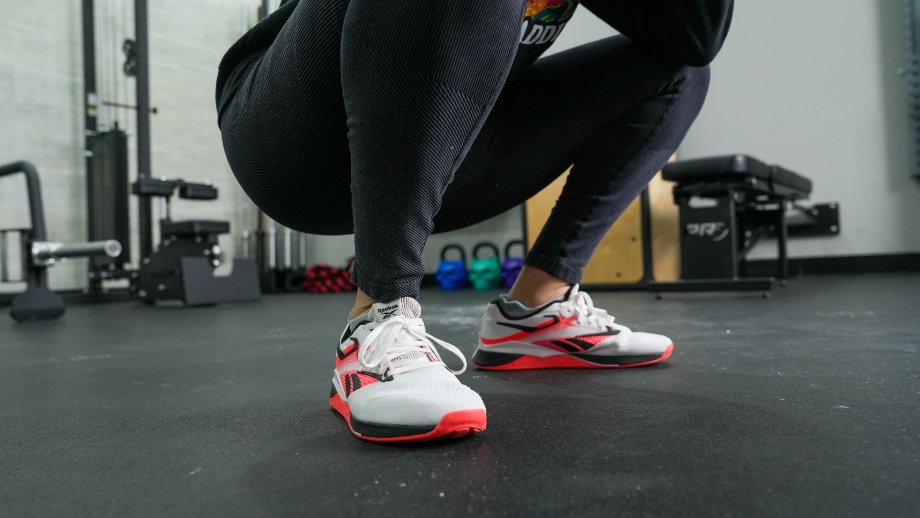
Cross-Training vs Other Shoes
What’s the difference between a cross-training shoe and any other type of sneaker? Here’s the low down:
Cross-training shoes vs crossfit shoes
Cross-training shoes and CrossFit shoes are one and the same. This type of shoe is designed to help you to do many things—run, lift, jump, climb, and more. They have a lower heel-to-toe drop than a running shoe, plus a stable heel to support lifting. They’re also flexible enough to allow dynamic movements.
Cross-training shoes vs walking shoes
Walking shoes have more cushioning and have less focus on a locked-to-the-ground feel you want for resistance training. Many walking shoes are also designed in a way to support front-to-back movement with a rounded heel. Walking shoes may offer more cushioning that a cross-trainer but not as much as a running shoe.
Cross-training shoes vs running shoes
Running shoes will likely have the most cushioning of the three and have a higher stack height. Running shoes are designed to absorb force from running and are not designed to provide amble stability for lifting weights. Running shoes also have a lightweight upper, making it breathable for but not quite as durable as a cross-trainer.
Other Cross-Training Shoes We’ve Researched and Tested
These are far from the only shoes we tested and tried out, and there were quite a few we went back and forth on that ultimately didn’t make the cut.
- Nike Metcon 8: These are great training shoes, but honestly, the Metcon 9s are better and not that much more expensive so it’s worth the few extra dollars.
- On Cloud X: These are honestly more of a running shoe than a training shoe.
- Altra Solstice X2: These are pricey, but our tester keeps coming back to them because he likes them so much.
How We Picked and Tested the Best Cross-Trainers
We wanted to see how much these shoes lived up to the cross-training name, so we did just about everything in them including, but not limited to, running, powerlifting, CrossFit, rope climbs, walking around the block, wearing them to dinner, and trail running. We also went to our Facebook group for your help and got some great recommendations!
Naturally, no one shoe could do all of these as well as a specialty shoe so we wanted to find ones that worked well enough across a broad spectrum of activities. We also took a few other qualities into consideration.
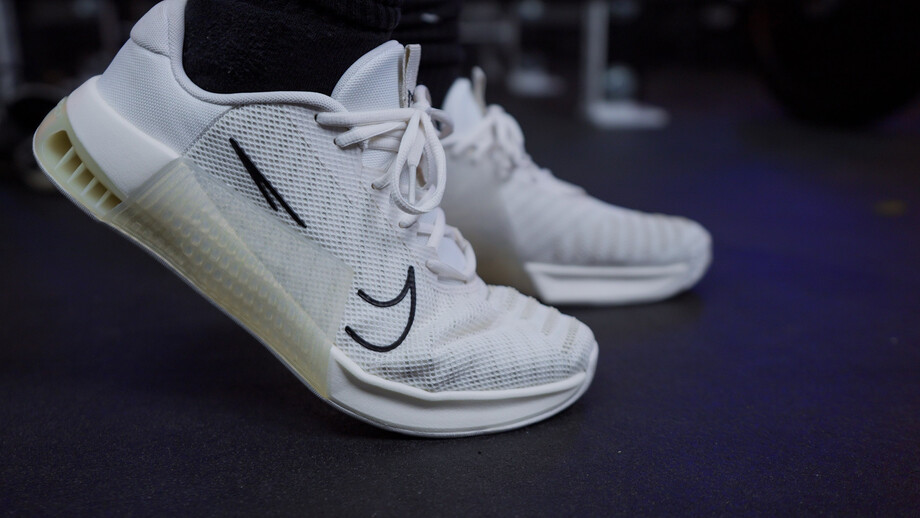
Durability
How well did these shoes hold up to our rigorous testing system? If they fell apart after a few weeks, or caused general discomfort, we crossed them off and started on a new pair.
Value
Some of these shoes cost a little more than others we considered, but we found they performed to a degree that we considered it worth the money. On the other hand, cheaper shoes we put on our list are considered a good value because they deliver optimal bang for your buck.
Aesthetics
Functionality is key, but you also don’t want to wear an ugly pair of shoes.
Versatility
We already covered this a bit, but a good cross-trainer needs to carry you through various workouts. At the very least they should be able to be worn as everyday shoes in addition to being your workout shoes, but it’d be great if they carried you through cardio, weightlifting, and your evening walks.
Comfort
This goes without saying, but your shoes need to feel comfortable while you’re wearing them. That’s true even for dress shoes.
Buying Guide for Cross-Training Shoes
Knowing what to look for in a cross-training shoe isn’t as straightforward as searching for the best weightlifting shoe or CrossFit shoe, because it depends on your training style. Here’s a general guide that should apply to most, if not everyone who’s in the market for a cross-trainer.
Durable Outer
Sneakers aren’t something you should buy multiple of every year, so you want to make sure it’s going to last you at least six months. Soft or cheap material can get easily torn up if you take them out during nasty weather, or put them through an hour-long workout that forces the material to stretch beyond its limits.
Most shoe manufacturers will tell you what the outer layers are made of, though sometimes you have to click on “More Info” or “Specs” to find it, and you can do research to find out if that material is suited for the weather where you live or for the type of exercises you’re going to do.
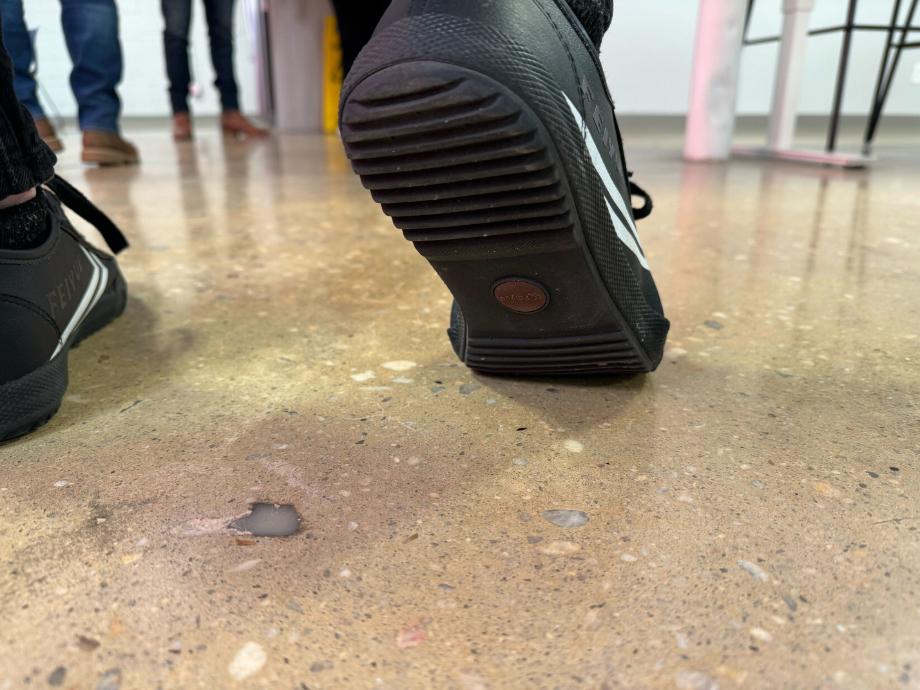
Cushioning
This is one of those things that comes down to preference, but generally you want to find that sweet middle spot. Or maybe you don’t. Some people prefer a little more contact with the ground and that’s totally fine.
If you’re not sure what to look for when it comes to cushioning, know that high cushioning is great for things like running to absorb the impact on your feet, and lower-level cushioning is needed for weightlifting when you need to push off the ground.
Width and Toe Box
Again, just like any other pair of shoes you buy you want to make sure your cross-trainers fit snug without feeling like a boa constrictor wrapping itself around its prey. But once more, this depends on how you’re going to train.
If you’re running, you’ll want a good “foot hug,” which is exactly what it sounds like. Weightlifters and powerlifters, though, will want a little bit more wiggle room to drive their feet into the ground when eeking out those last few reps.
Material
You’ll want to make sure that every part of the shoe, from the upper to the midsole, is made with durable materials such as Thermoplastic Polyurethanes (or TPU) or some type of responsive foam. Avoid cheap materials like plastic.
Best Cross-Training Shoes FAQs
What are cross-training shoes best for?
As its name suggests, a cross-training shoe is a shoe that can be worn across different types of training, but they’re best for workouts where you’re combining weight training, short bouts of running, and plyometrics.
Can I wear running shoes for cross-training?
A running shoe is specifically designed to protect your feet from the stress you put on your body while running, so it’s oftentimes quite cushioned. A cross-trainer may have some of the same features, but to help you during other movements and exercises, it also has components that aren’t as desirable in a straightforward running shoe. If your cross-training workout features heavy lifts, it’s probably best to look for a lifting shoe. However, for most people, a running shoe would be fine.
Are cross-training shoes good for lifting?
If you’re a recreational weightlifter, a cross-training shoe will get the job done, but if you’re training for a weightlifting contest you should invest in a weightlifting shoe. Some cross-training shoes are better suited for weightlifting than others, and ultimately the shoe that feels the best on your foot is the one you should go for.
Are cross-training shoes good for everyday use?
Yes, you can absolutely wear cross-training shoes daily, just know that if you do, they may wear down faster than if you were to just reserve them for your workout sessions.
Are Hokas good for cross-training?
Our experts do not recommend HOKA running shoes for cross-training. HOKA shoes are excellent for running, but have a high stack height and tons of cushioning, which will not provide ideal stability for resistance training.
References
- Lu Z, Li X, Xuan R, Song Y, Bíró I, Liang M, Gu Y. Effect of Heel Lift Insoles on Lower Extremity Muscle Activation and Joint Work during Barbell Squats. Bioengineering (Basel). 2022 Jul 8;9(7):301. doi: 10.3390/bioengineering9070301. PMID: 35877352; PMCID: PMC9312299.

